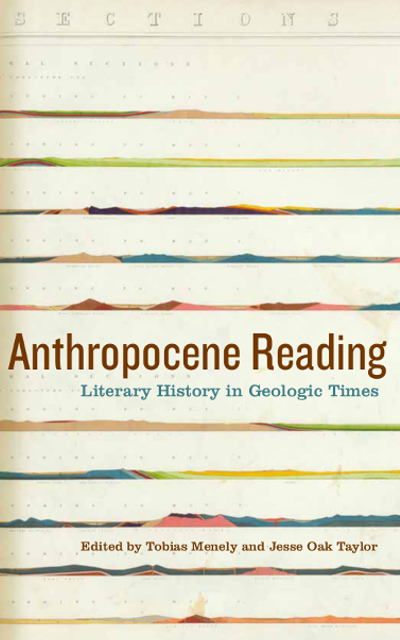Anthropocene Reading: Literary History in Geologic Times Edited by Tobias Menely and Jesse Oak Taylor

Tell us about your new book. What is its central project?
The Anthropocene is a proposed geological epoch defined by the magnitude of human intervention in the Earth System. In Anthropocene Reading: Literary History in Geologic Times, my co-editor, Jesse Oak Taylor, and I asked our thirteen contributors to reflect on how the Anthropocene hypothesis might inform, or challenge, inherited methods of critical reading. As we wrote in the Introduction, “The Anthropocene provides an opportunity for literary studies to test and transform its methods by examining how the symbolic domain might, and might not, index a historicity that exceeds the human social relation and encompasses planetary flows of energy and matter.”
What got you started thinking about this set of problems in this way?
I started thinking seriously about climate change as a challenge for humanistic modes of inquiry after the failure of the Copenhagen Summit in 2009. I’ve come to believe that our usual ways of thinking about literature, as representing or resolving problems of human social life, are insufficient, perhaps even complicit with a broader cultural repression of the scope of the current planetary crisis.
If you could pair your book with one other text, what would you recommend? Why?
Vladimir Vernadsky’s The Biosphere (published in Russian in 1926, first complete English translation in 1998). This extraordinary book was foundational in establishing the Earth System approach and specifically in identifying the significant role that the living world (the biosphere) plays in the chemical and thermodynamic cycles that link the atmosphere, hydrosphere, and lithosphere. Vernadsky’s concept of the noosphere (the realm of human thought) invites us to see socio-symbolic activity as itself a constitutive phase in these planetary cycles.
Anthropocene Reading was published by Penn State University Press. You can find it here.

